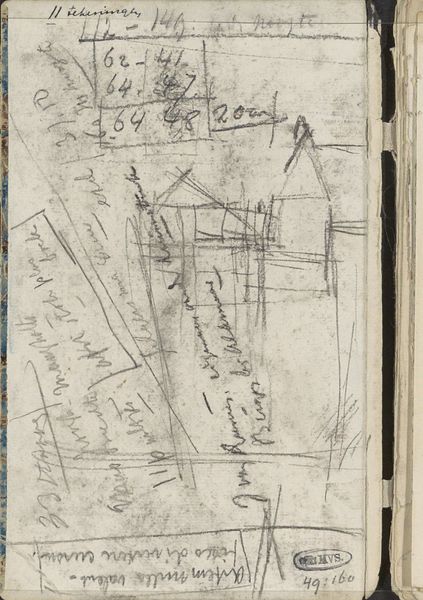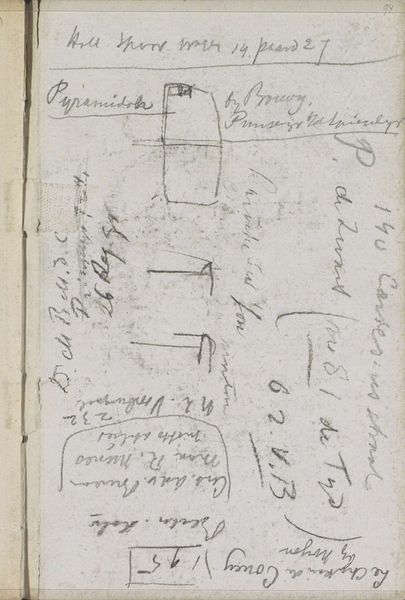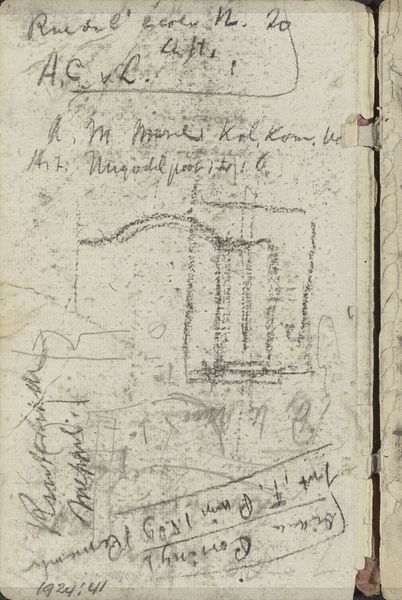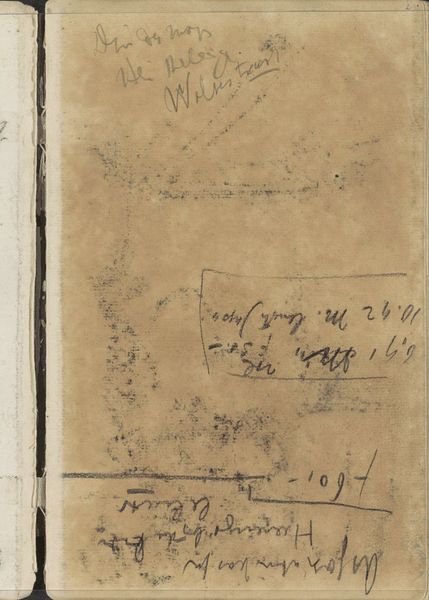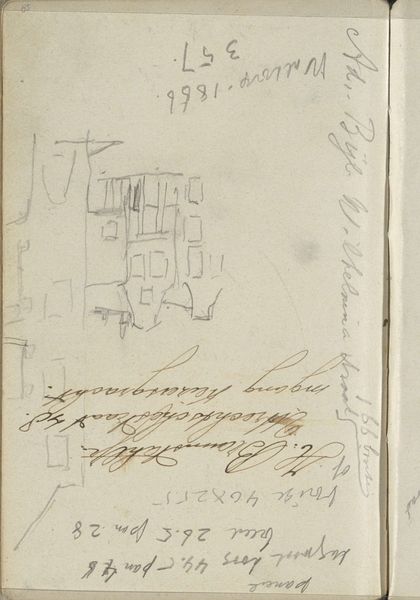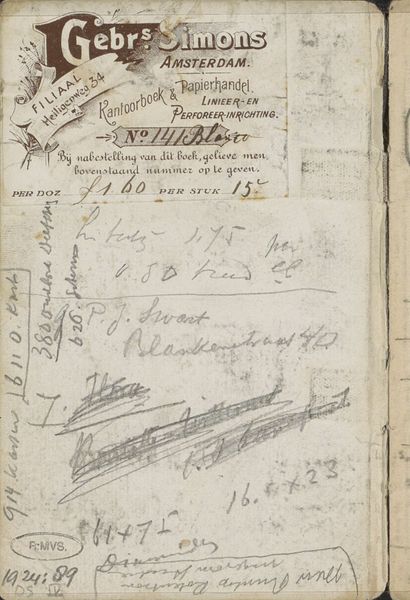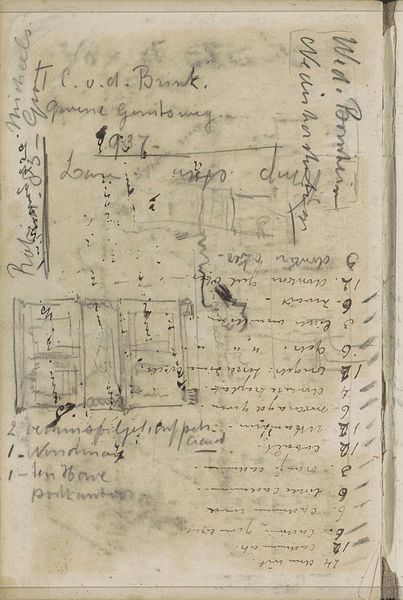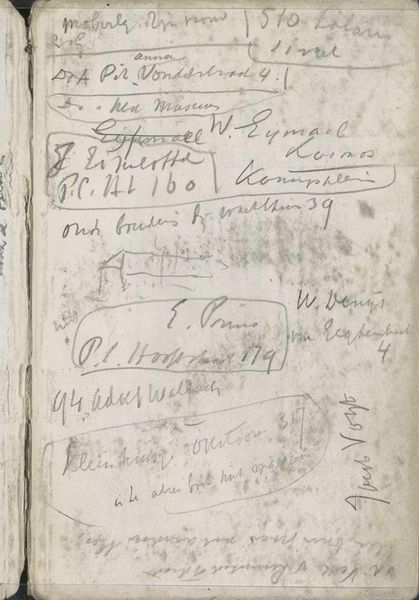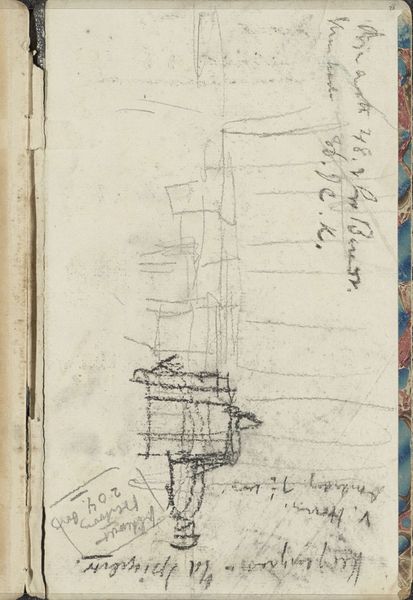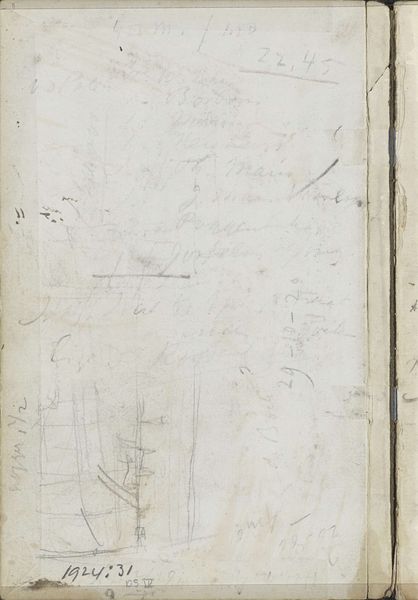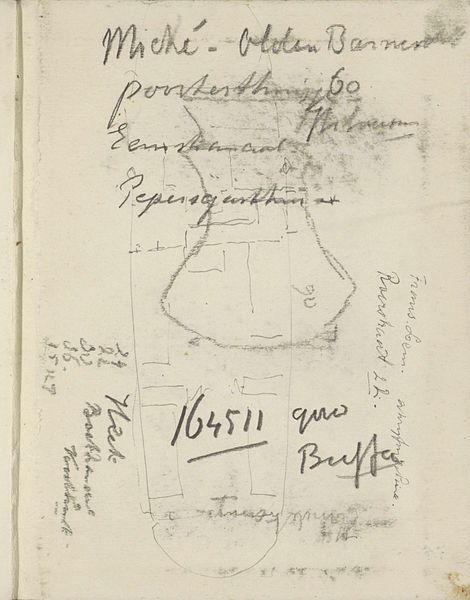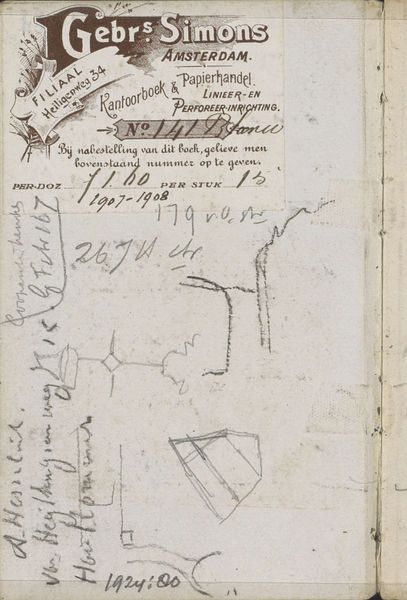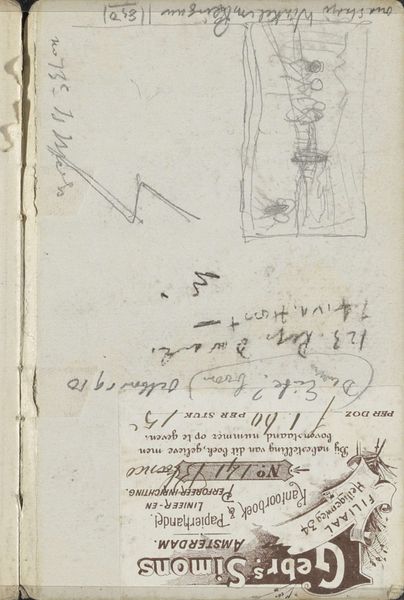
Copyright: Rijks Museum: Open Domain
Curator: Breitner's "Studie en annotaties," dating from around 1903, and currently held at the Rijksmuseum, offers such a compelling peek into his artistic process. This delicate pencil drawing on paper, seemingly just a collection of notes and sketches, whispers volumes about his considerations of form and space. Editor: It looks like controlled chaos to me, almost! Scribbled text dances with tentative architectural outlines. It feels unresolved, more like a stream of consciousness than a finalized composition. Does it reflect the urban landscape he’s known for? Curator: Indeed, in a way. Breitner, often called the chronicler of Amsterdam, was fascinated by urban scenes. What appears abstractly here, could be notes relating to composition. He was, after all, exploring ways to capture the dynamism and evolving identity of city life through impressionistic landscape depictions. Look closely; some scholars propose those lines and shapes are calculations relating to the framing of his photographs. Editor: Fascinating! That aligns with the sociopolitical context. As Amsterdam rapidly modernized, the rise of photography was radically transforming art and documentation. So, the inclusion of those measurements situates this piece as a meta-commentary—Breitner navigating photography’s challenge to traditional artmaking and trying to work around it to establish his own, newer artistic presence. Curator: Precisely! It is tempting to view them simply as artistic calculations for compositions of landscape painting, but the modern perspective sees a dialog with and through photographic and mechanical reproduction and perception in art. The beauty resides precisely in its rawness, this in-between state where calculation and artistic gesture coexist. Editor: I agree. Thinking of this piece through a contemporary lens, this incomplete nature is powerful. Its deliberate "unfinishedness" seems a visual response to photography’s cold accuracy and his response is this impressionistic view of his surroundings. The lack of formal completion is its political power; like Breitner refused to comply or take seriously his competition. Curator: Beautifully said! It transforms what could seem like a simple sketch into a profound meditation. It’s always fascinating how an artwork invites different perspectives over time. Editor: Yes, by connecting with our unique identities we manage to unearth new connections—and therefore extract something different and newer from history and art itself!
Comments
No comments
Be the first to comment and join the conversation on the ultimate creative platform.
